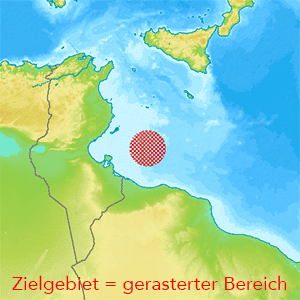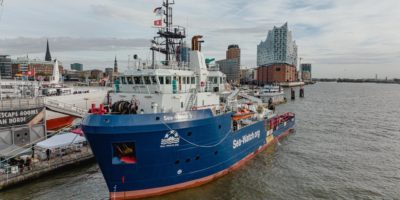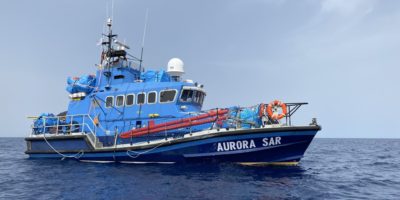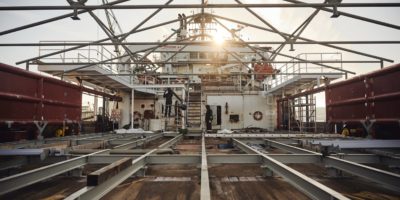Project period
Sea-Watch was primarily intended to patrol the Mediterranean Sea with an old refitted trawler- the “MS Sea-Watch”- close to the Libyan coast, where most of Africa’s escape routes join for the final journey: Reaching European shores by boat. After equipping the old fishing cutter and preparing everything necessary, the first mission could cast off in June 2015, as the refugee crisis in Europe culminated with countless drowned refugees after the ending of Mare Nostrum. When bad weather conditions set in in autumn, the project had to be paused.
But as Sea-Watch had turned out to be so successful (more than 2000 rescued refugees within 3 months of operation), there was no other option than carrying on. Shortly afterwards, in October 2015, the concept for the new mission could be presented to the public: Establishing a Search and Rescue (SAR) mission between the small island of Lesbos, Greece, and the Turkish mainland. This area, only a few miles of water separating the shores, sadly has to report the highest number of deaths in 2015 regarding European boarders and therefore made Sea-Watch urgently needed.
The mission on Lesbos will differ from the mission on Lampedusa in many aspects but certainly embodies the same values: Humanity.
Regarding the mission on Lesbos that is going to commence shortly, new updated information will be provided on this page soon.
Base camp
The base camp for the first mission between Libya and Italy was located on Lampedusa, a small Italian island located 180nm off the Libyan coast. Between the missions, the “MS Sea-Watch” was mooring in the port of Lampedusa to be repaired and refitted for the next crew.
Itinerary
For Lampedusa, the crew consisted of 8 to 9 members, covering a medical team, a nautical team and engineers. The missions took, depending on the weather and many other circumstances, 4 to 12 days. Having reached the operation area after around 24 hours from Lampedusa, the days were comparted into shifts to secure a steady surveillance of the surrounding with binoculars (active search) and the capacity to react to emergencies at all times.

Assistance
Refugee boats in general are usually overcrowded and in bad condition and therefore depict an obligatory sea rescue case.
Working between Libya and Lampedusa, the following measures were taken by the Sea-Watch crew upon spotting a refugee rubber boat:
– giving information (“You are in international waters”)
– handing out life jackets
– distributing drinking water
– providing first aid
– sending out life rafts to relieve overloaded rubber boats or replace deflated rubber boats
– notifying of authorities and watchthemed.net
Refugees could not be boarded on or transported with the “MS Sea-Watch”. Instead, the crew waited for bigger ships to bring the refugees to Europe and therefore was able to remain in the operation area to continue the mission. For more information on this matter read Pro Asyl-“Guidelines for Skippers& Crews Rescuing Refugees in Distress”.
Crew
For Lampedusa, the crew consisted of 8 to 9 people. The crews changed after every trip, assuring the psychological and physical well-being of each crew member as well as a high level of motivation. Head of the crew always was an approved skipper, taking responsibility for the crew, ship and mission. In addition to nautical staff, there we doctors, paramedics, mechanics and journalists on board.
Sea-Watch was furthermore supported by SeB e.V., an organization specialized on the aftercare of individuals working in traumatizing circumstances.
Communication
For communication with the base camp on Lampedusa, the authorities involved in SAR and for keeping our media coverage as up-to-date as possible, the MS Sea-Watch was equipped with a VSat sattelite uplink, providing 24 hour internet and telephone access.




